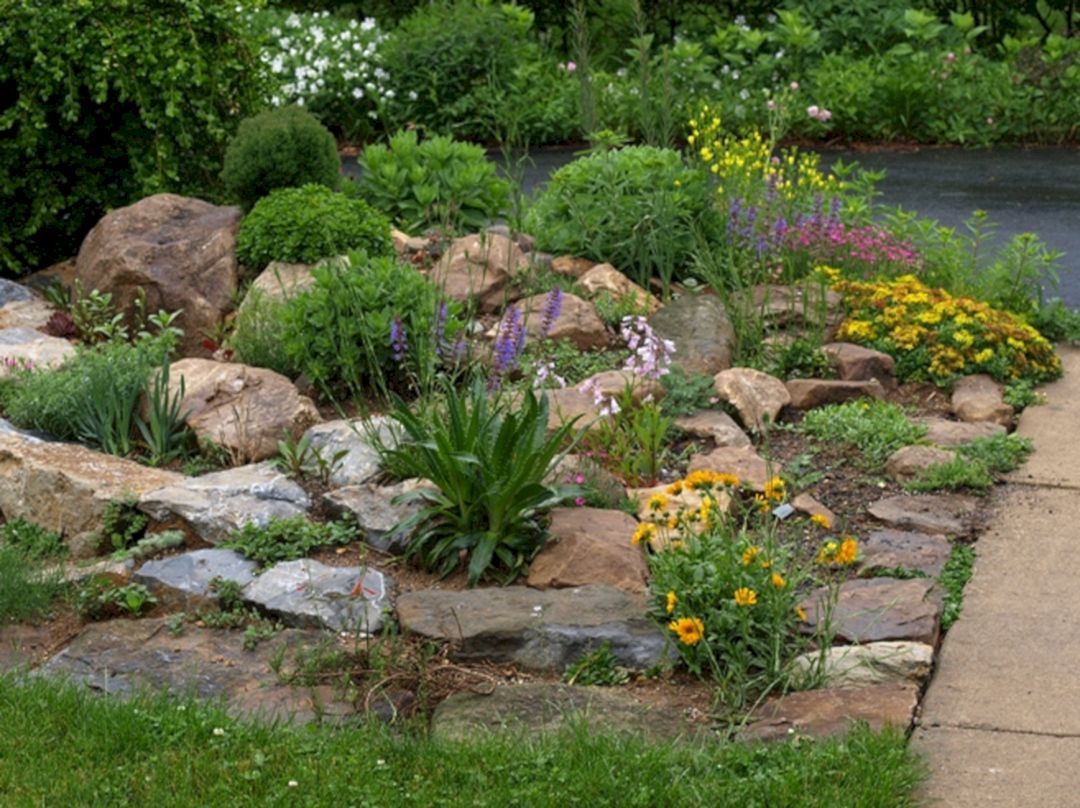Rock gardens are a beautiful way to add visual interest and texture to your outdoor space. Their rocky, rugged appearance contrasts beautifully with brightly colored potted plants. Here are some tips for creating a gorgeous rock garden accented with potted plants:
Choosing the Right Location
When selecting a spot for your rock garden, make sure it gets at least 6 hours of direct sunlight daily This allows the rock surfaces to warm up, creating a suitable environment for alpine and drought-tolerant potted plants Good drainage is also critical – avoid low-lying areas that collect water. Slopes and terraces are ideal locations.
Incorporate Different Rock Shapes and Sizes
Use a variety of rock types and sizes to create an organic, naturalistic look. Large boulders can act as focal points while medium rocks help terrace the garden. Pebbles and gravel fill in gaps and form paths. Aim for visual interest and plants growing in between rocks.
Select Appropriate Potted Plants
Theright potted plants will thrive in the rocky, well-drained soil. Good options include:
-
Succulents like sedum, hens and chicks, and ice plants for color and interesting textures. They tolerate heat and drought.
-
Alpine plants like rock cress, thrift, and pasque flower that naturally grow in rocky areas.
-
Perennials like candytuft, rock cress and creeping phlox for profuse spring blooms.
-
Ornamental grasses for year-round texture. Try blue fescue or tufted hair grass.
-
Low-growing shrubs like heathers, dwarf conifers, and lavender for structure.
Design the Layout
Create clusters of 3-5 pots with the same plant for impact. Use taller pots as focal points and shorter pots along borders and paths. Group pots by color – blues with purples, reds with oranges, etc. Repeat plants in different areas to tie the design together. Leave enough space between pots and rocks for air circulation and visual separation.
Use Contrasting Pot Styles
Vary pots in material, texture, and color for visual interest. Terracotta, concrete, metal, and glazed ceramic all work well and provide color pops. Use round, square,tall, and short shapes. Mix glossy and matte finishes. Ensure all pots have drainage holes. Use saucers to catch overflow. Elevate some pots on decorative trivets or pedestals.
Include Other Garden Elements
Accent your rock garden with other details:
-
Gravel or stone pathways winding through the pots and rocks
-
Benches or chairs tucked in inviting spots for relaxation
-
Architectural elements like obelisks, arbors, or ornamental bridges
-
Water features like a small fountain or pond
-
Flowering groundcover between pots to prevent weeds
-
Found objects like antique yard tools or repurposed items
-
Decorative borders of stacked stone or short stacked stone walls
Provide Proper Potting Mix
Use a sandy, fast-draining potting mix formulated for cacti and succulents. Amend regular potting soil with extra perlite or coarse sand to improve drainage. This will prevent plants from becoming overwatered.
Water Efficiently
Water potted plants in the morning, targeting the soil and avoiding wetting foliage. Use drip irrigation or soaker hoses if possible. Add a layer of gravel or sand on top of the soil to retain moisture. Group pots with similar watering needs. Adjust watering frequency based on weather, container material, and plant needs.
Fertilize Lightly
Rock gardens don’t require much fertilizer. Use a balanced slow-release fertilizer applied at half-strength in spring and summer. Too much fertilizer can damage alpine plants adapted to nutrient-poor soil. Always follow label directions.
Provide Winter Protection
In colder climates, cluster pots together near rocks or structures to shelter them from winter winds. Surround with mulch. Add burlap or foam insulation wrapped around exposed pots. Remove tender plants to an unheated garage or greenhouse. Water during warm spells.
With the right plant selections, materials, and care, a thoughtfully designed rock garden punctuated by colorful potted plants can be a stunning, low-maintenance addition to your landscape. The rocky terrain keeps weeds down while providing the perfect environment for beautiful alpines, succulents and rock garden perennials to thrive.
30 Best Architectural Plants to Grow in Containers
FAQ
Is it OK to put rocks around potted plants?
Will plants grow in rock beds?
- A Complete Guide to Caring for Yuki Cherry Blossom Shrub - January 23, 2025
- Identifying Red Hot Poker Seeds: What to Look For When Harvesting Torch Lily Pods - January 23, 2025
- A Complete Guide to Harvesting Evening Primrose Seeds - January 23, 2025

